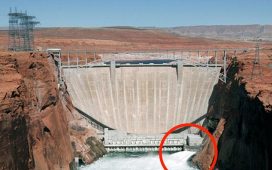Space and time are intertwined, called space-time, and gravity has the ability to stretch space-time. Objects with a large mass will be able to stretch space-time to the point where our perception of it changes, known as time dilation. The more mass an object has, the more it stretches and slows down time.
For example, Sagittarius A* – the gigantic black hole at the centre of the galaxy – would almost be able to stretch time to a point where it almost comes to a complete standstill.
Sagittarius A* has a radius of 22 million kilometres and a mass of more than four million times that of the Sun.
In other words, it is very dense.
And because it is so heavy, it has the ability to completely stretch out space-time, and travelling towards its centre means time would almost come to a standstill for you.
Emma Osborne, an astrophysicist at the University of Southampton, previously told an audience at New Scientist Live: “Anything mass will stretch space-time. And the heavier something is, or the more mass it has, the more it will stretch space-time.
“If you were to stand just outside the event horizon of Sagittarius A*, and you stood there for one minute, 700 years would pass because time passes so much slower in the gravitational field there than it does on Earth.”
However, when one reaches the singularity – the infinitesimally small point – expect to be torn to shreds by the intense gravitational pull.
This is due to a process called “spaghettification”. The immense gravitational pull is so strong that the force is much stronger at the base than the top.
READ MORE: NASA news: Space agency shows ‘galactic firework display’
However, any fears about being sucked into a black hole are void, as it would be virtually impossible to travel to one.
The nearest black hole to our planet is located 6,523 light-years away – one light-year is 5.88 trillion miles.
The farthest humans have been from Earth is 248,655 miles (400,171 km) in 1970 as part of NASA’s Apollo 13 mission when the craft swung around the far side of the moon – it took almost three days to get there.














